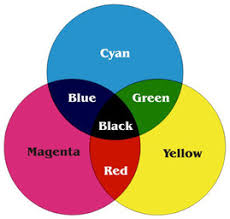There are several pigment blues, but we’ll focus on Cobalt teal blue and YInMn Blue. Phthalocyanine cyan PB17 and Indanthrene blue are also important pigments, but their properties vary widely. This article will provide an overview of each one. Read on to learn more about the different types of blue pigments. In addition to blue, these colours are also known as “yellow metal oxides.”

Different Types of Blue Pigments:
YInMn Blue
YInMn Blue is a newly discovered pigment that has the potential to revolutionize the way people create art. Its unique chemical properties allow it to be more durable than other blue pigments. It also retains its vibrant colour even after being exposed to water and oil. Compared to cobalt blue, which is toxic and fades quickly, YInMn is safe and non-toxic. YInMn was approved for commercial use by the U.S. Environmental Protection Agency.
YInMn Blue is also more environmentally friendly than cobalt or Ultramarine. It is a rare earth element, so the cost of using it in watercolours is prohibitive. Its downsides, however, are that it is more expensive to produce than the other blue pigments, and its availability is limited. Consequently, YInMn Blue is only available in limited edition 15ml tubes.
Cobalt Teal Blue
This beautiful colour can be used to paint turquoise blue skies or tropical seas. It can be mixed with other pigments to create bright, shadowy areas. Because it is semi-transparent, it can be applied to most surfaces without bleeding, warping, or fading. It is also suitable for glazing methods. It is a popular choice for use in paints, varnishes, and ceramics. In addition to paint, cobalt teal blue pigments are also used in ceramics, glassware, and furniture.
Artists who use this colour in painting have chosen it as their favourite. Its rich hue and unusual properties have made it a favourite among modern artists. If you want a vibrant color, try using Cobalt Teal blue.
Phthalocyanine Cyan PB17
Phthalocyanine PB17 is an intense, lightfast, semitransparent, and dark-valued blue pigment. It is available from more than 70 pigment manufacturers worldwide. Holbein Peacock blue (PBr17) is a popular shade of phthalo blue, but it can also be found in more natural forms. It is used in paints and coatings, rubber, and cultural materials.
Phthalo blue is an attractive and versatile pigment. When mixed with other blue pigments, phthalo turquoise produces a lighter-valued shade that is good for use in color point eight of the colour wheel. Other blue pigments derived from phthalocyanine blue are ultramarine blue and quinacridone violet.
Phthalo blue is the best substitute for a true peacock blue, but it lacks granulation. Phthalo blue is an excellent pigment for painters.
Indanthrene Blue
Indanthrone blue is an organic pigment found in the Vat. It is a medium-staining primary blue, and its colour range is warm and bluish-black to stonewashed denim. Its color is versatile and can be used for a variety of purposes.
It is the least common pigment of all three types of blue. It is the least expensive and dullest. It can dry 50 per cent lighter than Black Pbk6. It can be used for automotive OEM paints, coil coatings, powder coatings, and offset inks. It is also used in decorative water-based and solvent-based paints. It has many uses and is highly recommended for artists.
The Bottom Line
The above information on different types of blue pigments will help you choose the colour you need in your industry or work. All these blue pigments differ from each other and are very beautiful shades of blues.


